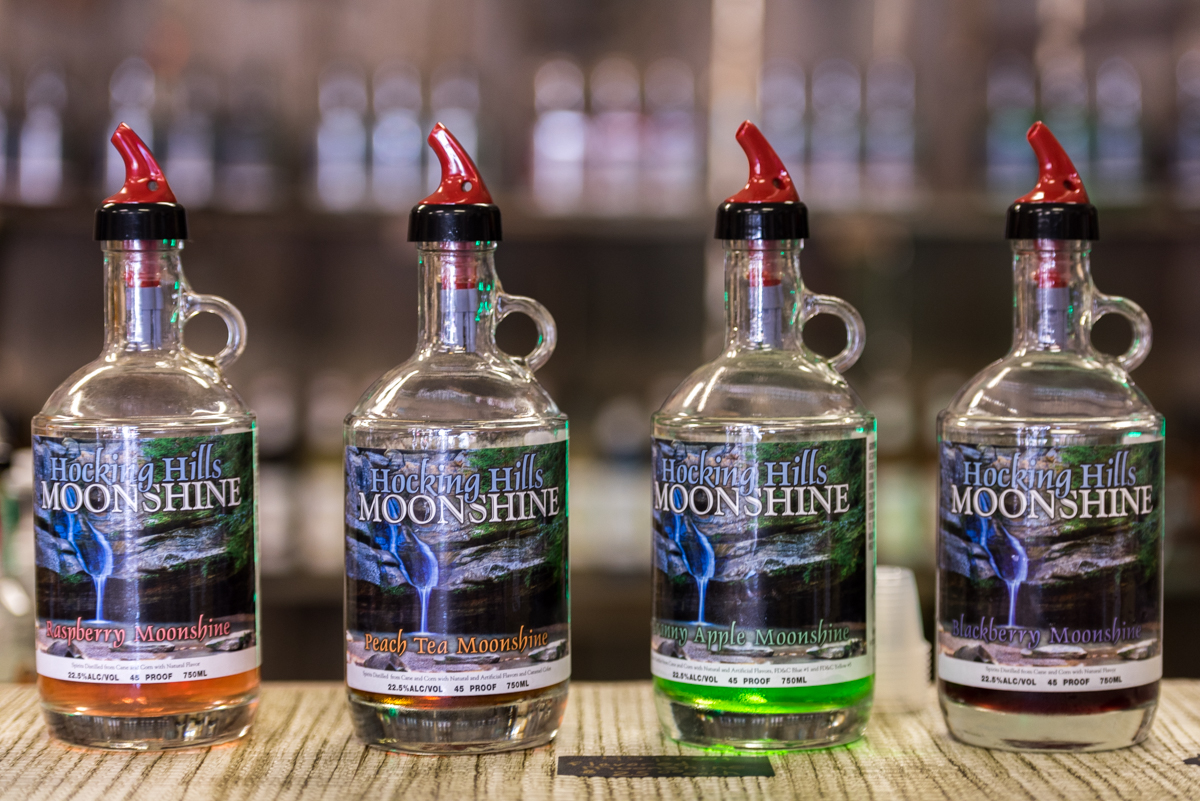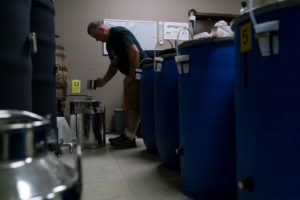
Hooch. Mash liquor. Mountain dew. Known by many names, moonshine is one of the oldest and most famous spirits in the U.S. Its flavor is distinctly sweet and deceitfully potent. And today, moonshine maestros like Brian St. Clair, owner of Hocking Hills Moonshine in Logan, continue to perfect its recipe. Southeast Ohio spoke to St. Clair for the scoop on how white lightning happens.
Get Started
In 2010, Gov. John Kasich signed a bill that allowed permits for distilling moonshine whiskey. According to St. Clair, becoming a lawful distiller requires obtaining special permits from the federal and state governments, filling out piles of documents, paying expensive application fees, registering with the Secretary of State, applying for a federal ID number, hiring an attorney and finding the right building. Lastly, makers have to submit their recipes for the state’s approval.
But that is not all. The key to a good whiskey is a clean source of mineral-rich water, St. Clair explains. Jack Daniel’s did not get where it is today by using water from the tap. What makes Hocking Hills Moonshine products special is a private water source.
Limestone caverns filled with groundwater lie beneath the St. Clair family farm. “Water is key and we have our own water source,” St. Clair says. “That’s invaluable. I can tell you the recipe for our moonshine, but you can’t make it.”
A lot has changed in the world of moonshine since it first earned its name following the start of Prohibition with the Volstead Act of 1920. For example, distillers no longer use methanol to make whiskey so no one has to worry about going blind. Also, when St. Clair makes moonshine deliveries, he does not need to go in the cloak of night, driving a souped-up Model-T to outrun Prohibition agents (although the business does have a 1930 Plymouth with a few bullet holes parked outside). Yet, one aspect of moonshining that has remained the same is the “still.”
Hocking Hills Moonshine returns to its roots with a setup similar to ones employed by the original moonshiners. St. Clair uses two 100-gallon stainless steel tanks. Sixty feet of copper pipes descend from the top of the tanks into wooden barrels filled with cold water. It is a design passed down through generations of moonshiners.
“We do a lot of low-tech stuff. There’s no charm in modern equipment,” St. Clair says.
Get Cookin’

The people of Southeast Ohio have been making moonshine with corn, sugar and yeast since the early days. When done correctly, the recipe produces a sweet, fragrant flavor that gives moonshine part of its appeal. St. Clair says the sugar, yeast and cracked-corn are mixed with the mineral water, then stirred for a couple minutes each day until ripening.
Now it is time to fill up the still. St. Clair says the mash is poured into the still, which is locked airtight and heated. The mixture begins to vaporize as it gets hotter, forcing steam up through the copper pipes. The steam spirals down copper pipes where it is “shocked” by the cool water, returning to its original liquid form and dripping into a collection barrel.
Not all levels of liquid in the barrel are created equal. At the top is the tail end, the least potent part of the barrel. Moonshine makers separate this from the higher-proof, good stuff.
Finally, mason jars or growlers provide authentic vessels for storing moonshine.
Hocking Hills Moonshine knows its product. They boast both a 90-, 120- and 151-proof Buckeye Thunder moonshine that come in flavors such as blackberry, raspberry, granny apple and more.
“I was intrigued by the moonshine, perhaps because I love strong single-malt scotch,” Margery Cobb, a Hocking Hills Moonshine customer, wrote in an email. “I would definitely recommend it to a friend. And I have!”
Southeast Ohio has a long history with moonshine. It has been distilled here for more than a hundred years, and its recipe perfected by distilling pros. If you are looking for some of the best moonshine the area has to offer and some lessons of its place in history, head to Hocking Hills Moonshine in downtown Logan.